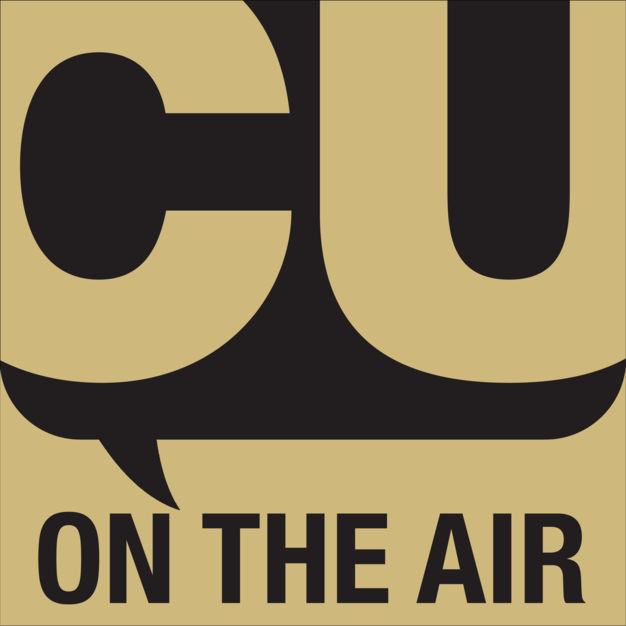
CU On The Air
Ken McConnellogue
University Relations in the CU Office of the President has launched a monthly audio podcast, “CU on the Air,” featuring faculty and staff throughout the university system who are leading experts in their field. The podcast is informational, relevant and entertaining, and promotes the value of the University of Colorado and its four campuses to the state and well beyond. Join Ken McConnellogue, vice president for university communication, as he chats with some of the most fascinating researchers in the country. Subscribe, and we’ll CU on the Air each month.
- 26 minutes 51 secondsPathways2Teaching Makes Strides to Diversify, Grow-Your-Own Teachers
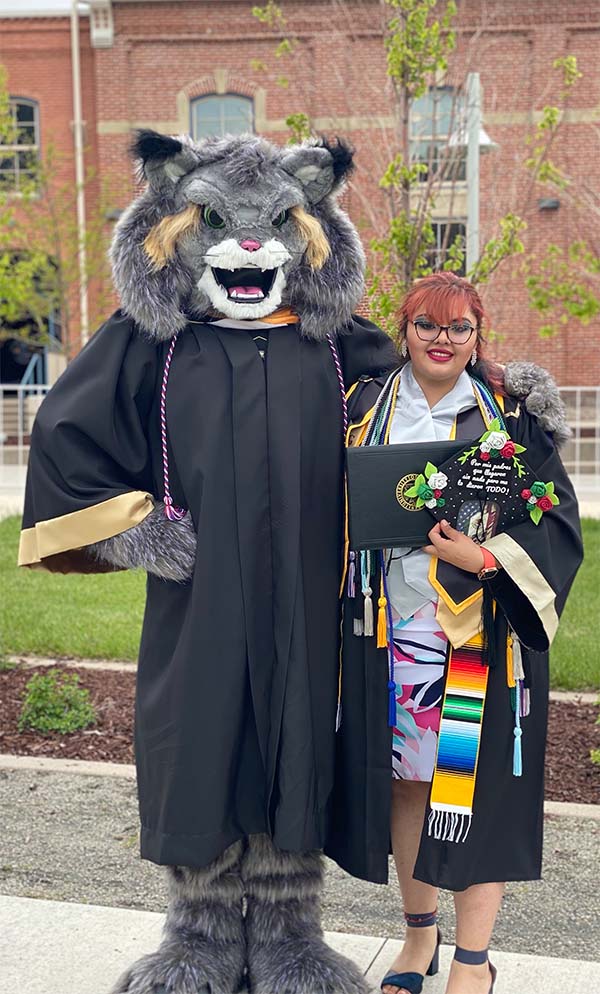 Joselyne Garcia-Moreno
Joselyne Garcia-Moreno
The percentage of K-12 students of color has raised dramatically in Colorado in the past few years, making up near 50% of our school population. Unfortunately, the teacher population has not kept up. For nearly 11 years, the University of Colorado Denver’s Pathways2Teaching program has aimed to balance that teacher-to-student ratio. Today, on CU on the Air, we’re talking with Joselyne Garcia-Moreno, a graduate of the Pathways2Teaching program, and Margarita Bianco, associate professor of education and the program’s founder.
-
- Margarita discusses the origins of Pathways2Teaching and gives an overview of the program.
- Joselyne discusses her background, high school and how she learned about the program.
- Joselyne was hired as a paraprofessional before even finishing high school.
- Margarita discusses the external partners of the program and their role.
- Joselyne talks about the support and teachers who helped her on her path.
- Margarita and Joselyne discuss how the program benefits students and ultimately our state.
- Joselyne is now working on her master’s degree and hopes to teach at the high school where it all began.
- Margarita, who was interviewed on the second episode of CU on the Air in 2017, discusses how the program has grown in the past nearly five years.
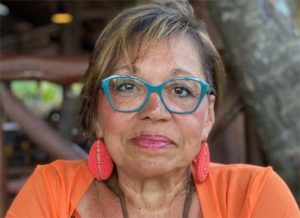 Dr. Margarita Bianco
Dr. Margarita Bianco
- Several institutions across the country have adopted the model of grow-your-own teachers.
- Pathways2Teaching has served about 1,700 students over the years.
- Students in the program continue to research and solve challenges within their communities as part of the program. Margarita offers some spectacular success stories.
- Margarita says, yes, progress is moving slowly, but at least there is movement. Graduates and students such as Joselyne make the struggle worthwhile.
- As a graduate of the program, Joselyne discusses steps that can be taken or further support and encourage students to become involved and be successful.
- Joselyne and Margarita close their eyes and look at education in K-12 schools, and share with us their vision.
- We at CU on the Air and our listeners will continue to support that vision.
Resources
- Pathways2Teaching Scholarship Fund
- Pathways2Teaching
- CU on the Air: Margarita Bianco
- NBC News: Schools need teachers of color
- 9News: Grow your own teachers program
- CU Denver
26 January 2022, 2:09 pm -
- 33 minutes 36 secondsStepping Back in Time to the Virtual Immersive Global Middle Ages
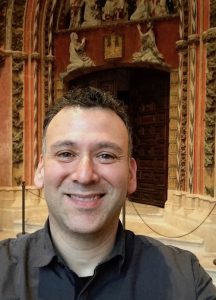
Roger Martinez, associate professor in the Department of History at the University of Colorado Colorado Springs, is using immersive virtual reality tools to recreate worlds that no longer exist. The Immersive Global Middle Ages project, funded by a grant from the National Endowment for the Humanities Institute for Advanced Topics in the Digital Humanities, will transport viewers back in time to experience the fifth through 15th centuries.
- Five-hundred to 1500 is generally what is considered the European Middle Ages. It encapsulates the space between what was before and what is after.
- Fifteen-hundred hearkens the Early Modern Age, an outcome of the Renaissance, which is this point where new ideas are taking hold, new experimentations with culture and knowledge.
- Violence was prevalent during the Middle Ages because of the fracture of the old Roman world of the legal systems, and the application of law.
- Middle Ages period reflects a local life in that your community is where you live, and to leave the city that you live in, or the region you live in invites banditry that you walk out of your space and you’re no longer protected.
- Revisiting the Middle Ages in today’s society, we’re undergoing a repaganization of global society, meaning there’s less Christianization in the world and more acceptance of different dynamics.
- Martinez’s work on the Immersive Middle Ages project will cover two years, with the first virtual exploration becoming available this summer.
-
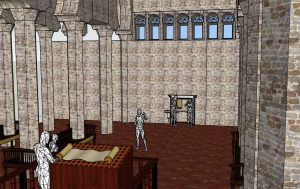 The Synagogue of Plasencia Virtual Environment (click to enlarge)
The Synagogue of Plasencia Virtual Environment (click to enlarge)
In many respects, we already have been experiencing immersive technology for 100 years, it’s called the movies.
- How virtual technology works and the aim of taking viewers/visitors back to the Middle Ages — adding a new kind of way of experiencing that completeness of another world.
- Broadening the view to understand what was happening across the globe during the Global Middle Ages. Other civilizations that were thriving, and deeply involved with trade.
- Seeking out academics around the world that are doing research on different civilizations and asking them to join for the next two years to talk about their research, to from the global perspective.
- The technology being used that will help take a step back to the Middle Ages is SketchUp Pro is a software made by Trimble.
- Coming is this summer 2022, the first set of scholars, about 14 folks, will descend on Colorado Springs where they will start to showcase the beginnings of their first models.
- Remember those super-cool dioramas behind glass in the museums? This virtual reality will be similar, except participants will be standing inside it.
- Participants will be able to stand alongside other people who are there at that time.
- Viewers will be able to download the content from sites such as Steam.
- The project is part of the NEH’s Global Middle Ages Institute collaboration. Collectively Martinez and his colleague Dr. Lynn Ramey at Vanderbilt University, a medievalist as well, benefited from this opportunity to create an institute around a more inclusive Global Middle Ages and technology.
- Also collaborating is alongside of them are scholars such as Geraldine Heng from the University of Texas at Austin.
- Martinez and his students have developed a model of a medieval city of Palencia, Spain, and are populating it with the synagogue, the cathedral, houses, different dioramas of different individuals.
- Meet Yosef Castano. Yosef, which is Joseph in the early 1400s, lived in the Jewish part of town and Christian knights lived in the same region. Yosef had an important job as a chainmail maker, and a plate armorer. This shows something completely new about the Middle Ages –coexistence and collaboration.
- Same with the Muslim wine-makers. Did they partake of their goods? We’ll never know.
- UCCS has a vibrant Master of History program; one of the largest ones in the region. Approximately 70 students work on a global master of arts throughout the world.
- How UCCS humanities graduates are combining the robustness of intellectual life and rigor of the humanities, which is about intensive investigation.
- Be sure to check the resources below to find ways to follow the progress of the UCCS Immersive Global Middle Ages project!
Resources
- UCCS Immersive Global Middle Ages
- Twitter: https://twitter.com/immersive_GMA
- NEH’s Global Middle Ages Institute collaboration
- National Endowment for the Humanities
- UCCS Master of History program
- CU on the Air: Exploring and learning from coexistence in Medieval Spain, June 2018
- University of Colorado Colorado Springs
- Technology in use:
11 January 2022, 2:34 pm - 30 minutes 51 secondsCU Boulder PhD Grads Bolster Educational Opportunities at Fort Lewis College

A University of Colorado collaboration has crossed the Great Divide to advance educational opportunities some 350 miles into Southwest Colorado. CU Boulder and Fort Lewis College have established a partnership that leverages the strengths of both institutions, where Arts & Sciences PhD graduates teach undergraduate students for a year – or more – at Fort Lewis College.
 Hernández
Hernández
“Fort Lewis College is in the city of Durango, which is in the Southwestern part of the state of Colorado,” explains Theresa Hernández, associate dean for research in the College of Arts & Sciences at CU Boulder, who serves as director of the partnership. “In terms of history, Fort Lewis College is well known for its strengths in teaching, especially the way in which it has small class sizes.”
The program targets the needs of each individual student and where they are in their educational journey, which benefits the FLC students as well as the fellows sent there who are learning to teach and learning from their students.
“Fort Lewis is designated as one of the six Native American serving non-tribal colleges. And because of that, it provides tuition-free education for Native Americans who qualified for this,” Hernández said. “It also awards more Native American students degrees than any other four year baccalaureate granting institution in the nation.”
Fort Lewis graduates at about 26% of all degrees awarded to Native American students and is deeply invested in addressing its early history as a boarding school. Recently, the college held a ceremony that included tribal elders, campus leaders and Native American students in which misleading images and narratives were removed from the clock tower as part of a larger ritual.
The University of Colorado is proud of the connection to this historic college, especially during this time of healing. Although the program is officially in its second year, it has seeds reaching back to about 2019 when Dean James White, arts and sciences, and Associate Dean Hernández met with Fort Lewis College faculty and leadership.
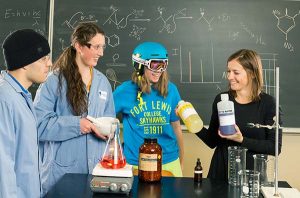 Cole
Cole
Callie Cole is an associate professor of chemistry at Fort Lewis College, a CU Boulder alumna, and a strong advocate for the partnership.
“It started when I was a student at CU Boulder back from 2010 to 2015, and my PhD mentor at CU Boulder, Dr. Veronica Bierbaum, helped build the foundation for all of the skills that I still use today in education and in research,” Cole said. “And so, because I had such a good training at CU Boulder, I was able to get a position as a faculty member at Fort Lewis College in 2015.”
Cole realized quickly that this pipeline from CU Boulder to Fort Lewis was already taking shape.
“There were CU alum all over the place here at Fort Lewis. And we started to put our heads together and just chat about like, what, what can we do to help our students learn more about awesome graduate programs like those at CU Boulder? What can we do to break down those boundaries and get them to start applying,” Cole said. “And then it was Dr. Theresa Hernández at CU who reached out to me.”
They clicked and the University of Colorado and Fort Lewis College Partnership was born.
“The way the program was initially developed is, we thought of a one-year in residence program, and that’s basically how we built the budget model, but now we’re refining it,” Hernández said. “We’re engaged in additional fundraising for this program, we are keeping that in mind so that the teaching fellows have the possibility of a second year of funding from CU Boulder.”
Cole said she and other CU alumni knew they wanted to bring a more organized connection between the two institutions.
“When I first joined in 2015, it was sort of free-flowing. A lot of us were CU alum, so a lot of the faculty here were naturally connecting and collaborating with CU, but we didn’t really necessarily have a lot of programs in place that were funded,” she said. “Now we have the CU postdoc program, which is, I think, soon going to become a two-year-long postdoc, which is fantastic. That allows like me to work with CU postdocs for a whole two-year period, while they’re doing undergraduate teaching and research.”
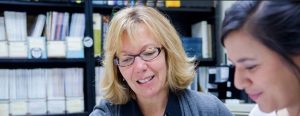
As a CU Boulder faculty member, Hernández’s research focuses on improving the lives of individuals affected by traumatic brain injury, stroke and stress, including veterans, student-athletes, and individuals with post-traumatic disorder. This desire to help others motivates her in her role as program director.
“I think of myself as the motor, I keep the program running and am responsible for requests for nominations, the interface between Fort Lewis College, both their faculty and leadership, and then CU Boulder arts and sciences, faculty and chairs,” she said. “I have done a lot of collaborations across my career. And I want to really emphasize the truly collaborative, interactive engaging role that Fort Lewis College plays in this, their leadership, their faculty, and the fellows themselves in terms of having ideas and then showing up for the manifestation of those ideas.” She encourages graduate students at CU Boulder who are interested in the program to contact their mentors and department chairs to get it on their radar.
University of Colorado leadership recently visited Durango and learned more about the CU Boulder Fort Lewis College partnership. The CU contingent included President Todd Saliman, and CU Regents Callie Rennison, Lesley Smith, Ilana Spiegel, Jack Kroll and Sue Sharkey – all were highly impressed by the program.
“Several of the fellows joined us and talked about their experience and what was truly impressive was their engagement in this teaching mission,” Hernández said. “That is a perfect complement to the strong research mission they had during graduate school and receiving their PhD and the ways in which they described connecting with the students, understanding the learning process, receiving strong mentoring from the faculty around them and even professional development from the faculty.”
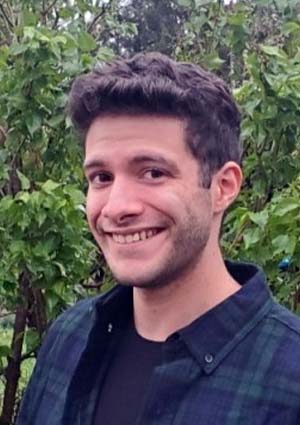 Lattke
Lattke
One of those fellows is Izzy Lattke, who is teaching chemistry to undergraduates at Fort Lewis. Izzy grew up near Worcester, Massachusetts, and earned his bachelor’s degree from Clark University before heading to CU Boulder for his PhD. As graduation neared, he wondered what he’d do next: one of his advisors stepped in.
“My advisor that I did my PhD under, professor Niels Damrauer, forwarded me an email from someone else in the department that was saying, ‘Hey, there’s this program at Fort Lewis, this post-doctoral teaching program,” Lattke said. “He knew that I really loved teaching.”
Lattke saw the small classrooms and location of Fort Lewis College as an opportunity to gain experience and grow and – most importantly – help underrepresented students across the state to gain confidence that they belong in the sciences.
“I act as an example of someone who comes from an underrepresented background, I’m Hispanic and first generation,” Lattke said. “I was raised primarily by my mother, and she didn’t go to college. So I experienced some of the barriers that a lot of underrepresented students run into.”
As Hernández, Cole and Lattke can attest, knowledge and hands on experience play an important role in this partnership. However, they aren’t the only things Fort Lewis College students take away from the program. They also benefit from a sense of community and lifelong friendships.
“That community also comes with belonging, and belonging to a group that is a size that is not the same as the large research University around it. And it’s also a community of shared mission, which is helping one another achieve the goal of a PhD and finishing grad school, getting a job, et cetera,” Hernández said. “That is something that is a truth about grad school that sometimes gets lost in the idea that CU Boulder as an institution is so big.”
Hernández and Cole created videos and seminars to encourage Fort Lewis students to keep in mind a graduate degree as an option; dispelling the intimidating myths that circulate among underrepresented and first generation students.
“The No. 1 misconception, of course, is I’m not good enough to join a PhD program,” Cole said. “The No. 2 misconception that I see is ‘I don’t have enough money to join a research program or PhD program in STEM.’ CU often provides stipends to graduate students. I was paid a salary the entire time I was at CU Boulder getting my PhD.”
Hernández said that although it doesn’t mean there is not debt, it means the debt is considerably less. She adds that they try to help these students realize how valuable their life experiences are, how they can approach a question and think about something like no one has ever thought about it before.
“You bring a unique lens to that question that can make a contribution. And the contribution may be just in the discipline that you’re studying, or it could be in something larger, like a community, your community,” Hernández said.
Cole agrees: “A lot of our students at Fort Lewis College, they might be first generation and they may have misconceptions of, ‘this is inaccessible to me financially,’ or ‘I just need to go get a job’ and reframing that as like, this is a job, actually, you can go join a PhD program and have a salary,” she said. “You can make this work.”
Because of his background, Lattke appreciates the challenges and misconceptions facing his students when considering furthering their educational career beyond a bachelor’s at Fort Lewis. He stresses to his students that he is still experiencing these firsts: As he hit the ground running in his fellowship, he encountered many firsts, such as creating his own curriculum every day.
Lattke strives to ensure that his students enjoy chemistry by exploring chemistry in their day-to-day lives, highlighting chemical reactions most taken for granted that we are constantly surrounded by.
“I just sort of went on my own path and chose how I wanted to introduce the concepts and came up with a game plan for what I was going to do this semester,” he said. “I came in and the first day of class I introduced myself and I gave a little timeline of how I got here. There are people here with PhD after their name, it’s not really obvious how that happens or the kind of work that it takes to do that.”
“There’s this very common misconception that you have to be like abnormally intelligent to earn a PhD,” he said. “Look, I failed chemistry the first time I took it in high school. I can show you my report card. It has an F on it.
“I feel that a lot of people have this sort of linear trajectory in mind when they think of how you become like a scientist.”
Without the outstanding mentors at CU Boulder and Fort Lewis College, the partnership would not be thriving, Hernández said. For her, it’s a matter of paying it forward.
“The biggest thing that I wish I had been told as a younger scientist was just how important it is to seek out and find a really high quality mentor,” she said. “I just can’t emphasize enough, when you find a good mentor, it is life changing. There are so many good mentors at CU Boulder, and there are so many good mentors at Fort Lewis College. So no matter where you are as a student, whether it’s CU or Fort Lewis, you’re going to be able to find one, so seek them out.”
Mentors at CU Boulder played a critical role in Lattke earing his PhD. And now, he is surprised and inspired by the amount of support he’s receiving at Fort Lewis College and eager to fulfill his role as mentor to his students.
“What I thought of coming into this was that there’d be like maybe one professor that would serve as like a mentor to me, right? And that’s not how it was. It’s more like every single person in this department is so excited about teaching, and so willing to just talk at any point about any aspect about course development. I’ve gotten a great amount of advice from every single person in this department and interacted with them a ton since day one,” Lattke said. “Here it’s like I have been given this great amount of freedom where they’re like, you can make general chemistry whatever you think is appropriate, which is awesome—and also really terrifying. Because I want to do a good job, and I want to make sure that I’m getting across the right concepts.”
The diversity of the college and the dynamic between CU and Fort Lewis make for a powerful connection, Cole said.
“CU Boulder is this awesome research powerhouse and Fort Lewis College equivalently. We are minority serving institution that provides opportunities to students who are largely first generation and we are in the classroom. So I do think that Fort Lewis’ powers and CU Boulder’s powers combined can really change the face of science for the better as we are increasing educational opportunities and increasing diversity in the process. I know this is just the beginning.”
Resources:
28 December 2021, 2:49 pm - 23 minutes 55 secondsTop Five of 2021: Innovation, Health Care, Fire Resilience, Community and Outreach

Happy holidays, CU on the Air listeners! As the end of the year draws near, we reflect on our top podcasts of 2021. It was a tough choice, as we spoke again this year with some of the most leading-edge and fascinating faculty and researchers at the University of Colorado.
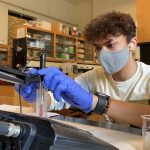 At No. 5, we had the Research Experience for Community College Students, or RECCS. This is a paid summer research internship program at CU Boulder open to all Colorado community college students interested in STEM. We had the opportunity this fall to talk with Alicia Christianson, program manager for RECCS program, and Anne Gold, director of this year’s education outreach program. We discuss how the program began, who is invited and the impacts on their college careers.
At No. 5, we had the Research Experience for Community College Students, or RECCS. This is a paid summer research internship program at CU Boulder open to all Colorado community college students interested in STEM. We had the opportunity this fall to talk with Alicia Christianson, program manager for RECCS program, and Anne Gold, director of this year’s education outreach program. We discuss how the program began, who is invited and the impacts on their college careers. For many families in the Metro area, safe, adequate housing is a dream and limited access to transportation is a nightmare. We talked with CU Denver’s Carrie Makarewicz, associate professor of urban and regional planning in the college of architecture and planning, about the housing and commuting crises. It came in at No. 4 in our most popular podcasts of 2021. Carrie discusses the work underway by a partnership across Denver to solve these decades-old problems – starting with the Valverde neighborhood in Denver.
For many families in the Metro area, safe, adequate housing is a dream and limited access to transportation is a nightmare. We talked with CU Denver’s Carrie Makarewicz, associate professor of urban and regional planning in the college of architecture and planning, about the housing and commuting crises. It came in at No. 4 in our most popular podcasts of 2021. Carrie discusses the work underway by a partnership across Denver to solve these decades-old problems – starting with the Valverde neighborhood in Denver.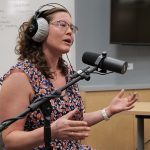 As of Sept. 21, the National Interagency Fire Center (NIFC) reported that 44,647 wildfires in the United States had burned 5.6 million acres of land. In our No. 3 podcast of 2021, we talked in September with CU Boulder researcher Natasha Stavros, a data and fire scientist and director of the Earth Lab Analytics Hub. We discussed the effects of centuries of land mismanagement, technology in fire mitigation, and what it will take to preserve the land and save structures, wildlife and human lives.
As of Sept. 21, the National Interagency Fire Center (NIFC) reported that 44,647 wildfires in the United States had burned 5.6 million acres of land. In our No. 3 podcast of 2021, we talked in September with CU Boulder researcher Natasha Stavros, a data and fire scientist and director of the Earth Lab Analytics Hub. We discussed the effects of centuries of land mismanagement, technology in fire mitigation, and what it will take to preserve the land and save structures, wildlife and human lives.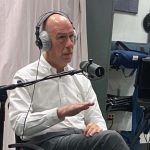 Burnout among health care workers is at an all-time high. And while there has been progress in curbing the COVID pandemic, there seems to be no respite for those working in health care. In the No. 2 episode of CU on the Air, we spoke with Dr. Marc Moss from the University of Colorado Anschutz Medical Campus, who studies burnout syndrome, post-traumatic stress disorder and wellness among critical care health professionals, specifically ICU nurses. He tells CU on the Air listeners how the new variants and continued high hospitalizations are wearing our health care workers and what they can do to continue to support them.
Burnout among health care workers is at an all-time high. And while there has been progress in curbing the COVID pandemic, there seems to be no respite for those working in health care. In the No. 2 episode of CU on the Air, we spoke with Dr. Marc Moss from the University of Colorado Anschutz Medical Campus, who studies burnout syndrome, post-traumatic stress disorder and wellness among critical care health professionals, specifically ICU nurses. He tells CU on the Air listeners how the new variants and continued high hospitalizations are wearing our health care workers and what they can do to continue to support them.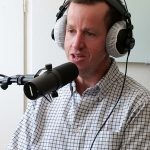 And our No. 1 podcast of 2021 was an experience as much as an interview. Ben Kwitek, director of innovation at the University of Colorado Colorado Springs, immersed us in innovation. He understands that innovation is critical to solving the problems our society faces. At UCCS, he is also the innovator of the world’s first Bachelor of Innovation. He tells us what innovation truly is, why UCCS is a prime location for the birth of ingenuity and what graduates bring to innovation across the state and country.
And our No. 1 podcast of 2021 was an experience as much as an interview. Ben Kwitek, director of innovation at the University of Colorado Colorado Springs, immersed us in innovation. He understands that innovation is critical to solving the problems our society faces. At UCCS, he is also the innovator of the world’s first Bachelor of Innovation. He tells us what innovation truly is, why UCCS is a prime location for the birth of ingenuity and what graduates bring to innovation across the state and country.Resources
- UCCS’ Bachelor of Innovation Boldly Goes Where None Have Gone Before
- Burnout Among Health Care Workers Continues. Here’s What to Do
- Wildfire resilience, not suppression, supports the environment
- The Affordable-Housing Crisis and Building Transportation, Health and Wealth in Underserved Areas
- RECCS pairs community college students with CIRES scientists
14 December 2021, 3:26 pm - 35 minutes 29 secondsBurnout Among Health Care Workers Continues. Here’s What to Do
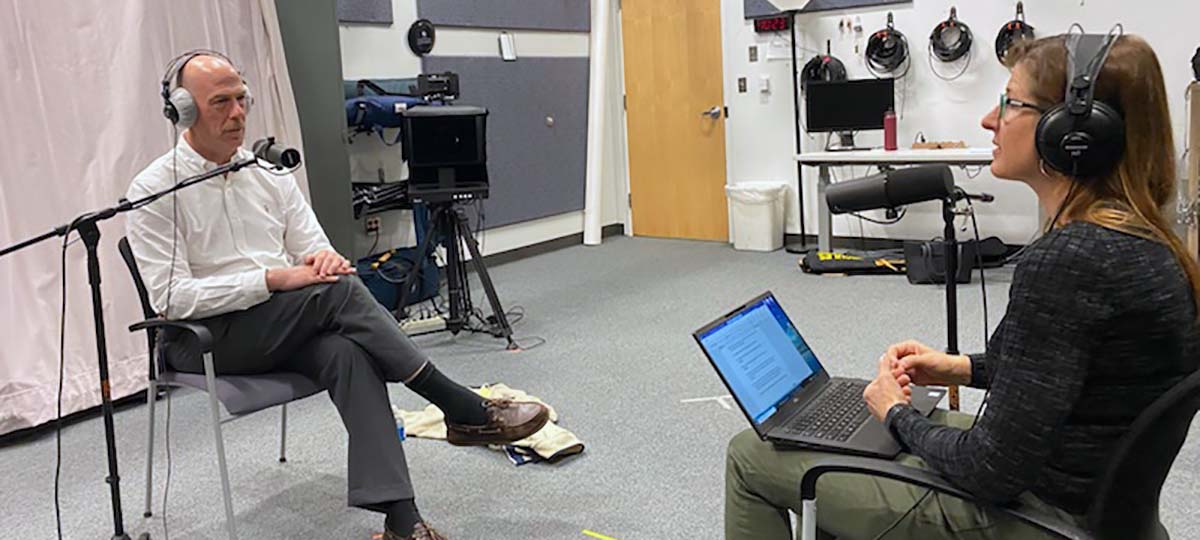
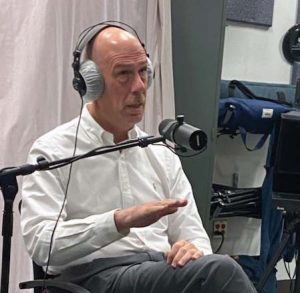
Burnout among health care workers is at an all-time high. And while there has been progress in curbing the COVID pandemic, there seems to be no respite for those working in health care. On this episode of CU on the Air, host Emily Davies talks with Dr. Marc Moss from the University of Colorado Anschutz Medical Campus, who studies burnout syndrome, post-traumatic stress disorder and wellness among critical care health professionals, specifically ICU nurses.
Dr. Moss is also the Roger S. Mitchell Professor of Medicine and head of the Division of Pulmonary Sciences and Critical Care Medicine at the University of Colorado School of Medicine, and the director of the Colorado Resiliency Arts Lab.
- At the start of the pandemic, people realized that health care providers are there to help; the providers realized this is what they’ve been training for. Everyone bonded together behind that common vision.
- Fatigue with the month-over-month continuation of the pandemic has left people disillusioned. Providers are still battling COVID-19 at high levels; the public is weary of hearing about it.
- Health provider burnout is exacerbated by uncertainty. The need for ER care and intensive care units can fluctuate daily or hourly.
- Health care professionals are threatening to leave – and some are leaving – the profession. This puts more strain on the remaining professionals to cover critical care patients.
- The CU College of Nursing graduates about 500 nurses annually, which – along with other CU Anschutz graduates entering the profession – is very helpful to the pipeline.
- Moss discusses the symptoms of burnout: what to look for in a loved one, colleague and oneself and some helpful steps to take.
- The Colorado Resiliency Arts Lab (or CORAL) at the University of Colorado School of Medicine blends arts and medicine for better outcomes, such as creative art therapies.
- As the Roger S. Mitchell Professor of Medicine and head of the Division, Pulmonary Sciences and Critical Care Medicine, Dr. Moss researches and treats acute respiratory distress syndrome, neuromuscular dysfunction in critically ill patients who require mechanical ventilation and more.
- Dr. Moss outlines some advancements in treating people with ARDS, including some that have come from the COVID-19 pandemic.
- How can you help our health care workers? “People want to feel appreciated and supported in anything. If you know, people that are health care professionals, I think just reaching out to him and ask him how you’re doing and letting people know you’re thinking about them. And that’s an easy first step and gets back a little bit to those signs in neighborhoods at the beginning of the pandemic,” Dr. Moss.
Resources
23 November 2021, 12:55 pm - 24 minutes 15 secondsCU Continues Its Long History of Honoring, Serving Veterans


November is National Veterans and Military Families Month, one of the 12 months each year that the University of Colorado prioritizes and supports the needs of those who have served our country. Today on CU on the Air, we talk to Lisa Buckman, director of veteran and military affairs at the University of Colorado Colorado Springs, and Yvonne Dinsmore, interim director, and Colton Johannesen, transition and support coordinator, at the CU Denver and CU Anschutz Medical Campuses.
The University of Colorado has a long history of serving veterans, as well as their families, and helping veterans reach their educational goals. Whether through Boots to Suits community mentorships, student mentors, new veteran centers, extensive services for vets and their families on the campuses,
 or mental health guidance, CU is there for the veteran and military communities.
or mental health guidance, CU is there for the veteran and military communities.Resources
- UCCS Veteran and Military Services
- CU Denver Veteran and Military Services
- CU Anschutz Veteran and Military Student Services
- UCCS Boots to Suits
- CU Denver | Anschutz Boots to Suits
- CU System Military Resources
- University of Colorado Colorado Springs
- University of Colorado Denver
- University of Colorado Anschutz Medical Campus
2 November 2021, 11:24 pm - 37 minutes 51 secondsCU Denver Engineers Diverse Ways to Serve Communities
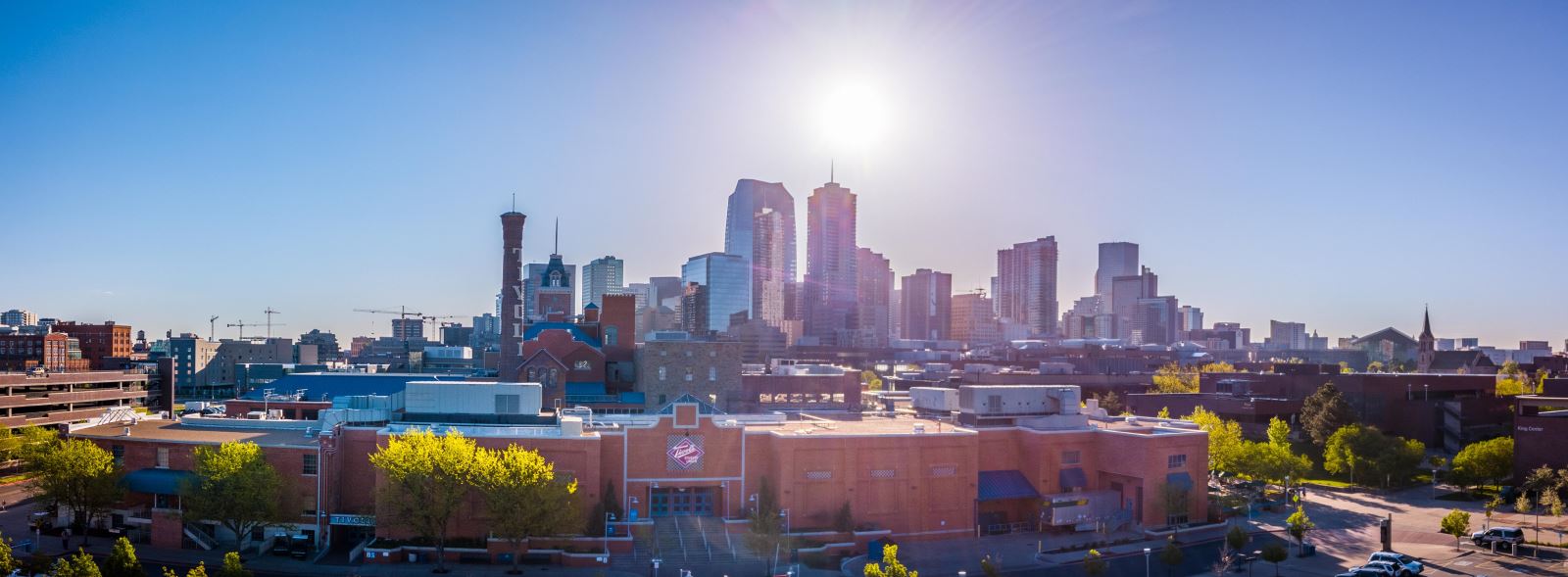
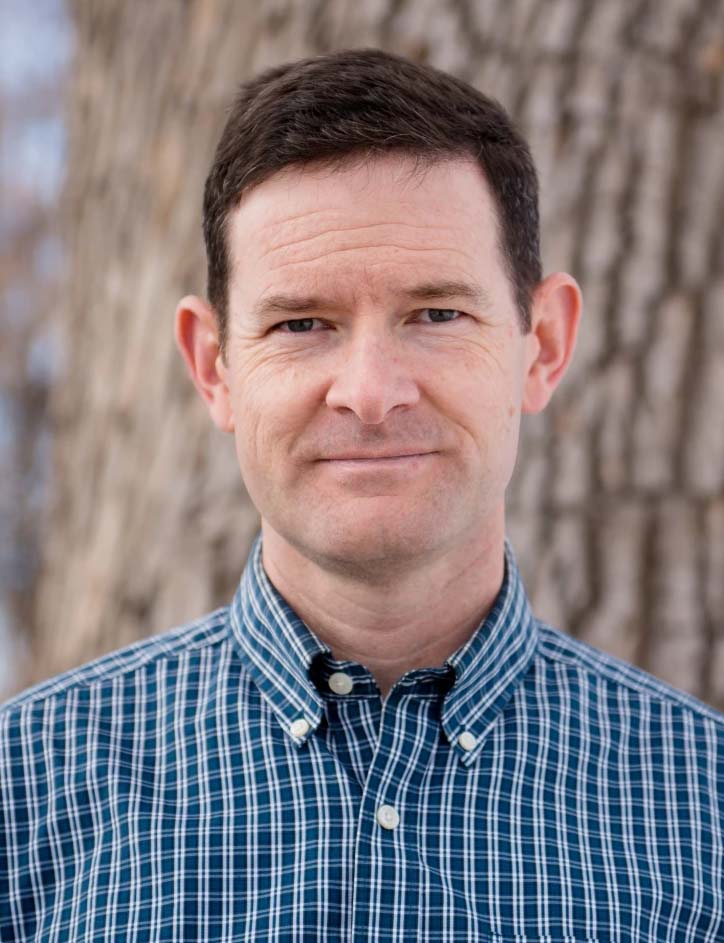 Dr. David Mays
Dr. David Mays
Engineering is a higher calling, a service today to diverse communities that benefits society for generations to come. There are many avenues for engineering graduates and today on CU on the Air, host Emily Davies talks to Dr. David Mays, professor of civil engineering at the University of Colorado Denver. He has assisted more than a thousand students onto their path.
- Since starting in 2005, Dr. Mays has advised 32 master’s and Ph.D. students and educated about a thousand students total.
- Engineering degrees are great preparation for anything. For example, one of Mays’ students is now a full-time instructor in engineering technology at Metro State. Two other students finished their engineering degrees and then went on to seminary to become preachers.
- Engineers are not only working for themselves and their own organizations, rather they’re trying to serve people they haven’t met.
- Civil engineers are responsible for the planning, design, construction, maintenance, and eventual disposal of the infrastructure that supports the social and economic intercourse of civilization.
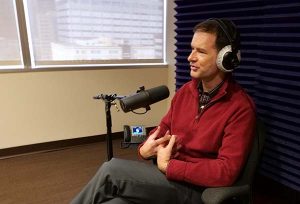 In civil engineering, what is being built today often is still in service a hundred years from now.
In civil engineering, what is being built today often is still in service a hundred years from now.- Engineering attracts students of all ages and backgrounds.
- Mays discusses his research on environmental contaminants and how they can be neutralized through filters and aquifers for a cleaner, healthier society.
- Almost every river that crosses the Colorado border is flowing from Colorado to a neighboring state. Because of that, Denver has good water quality.
- In one study, Mays found that even a small leak of pure methane into the environment can cause a lot of damage because methane is much more damaging greenhouse gas than carbon dioxide.
- Mays discusses how wildfire suppression – exacerbated by the climate change – has hindered soil and water conservation.
- Grants from the National Science Foundation have funded groundwater and hydrologic sciences research, which is now being picked up and expanded by other researchers across the USA and around the world.
- Mays discusses his role in the NSF-sponsored program Environmental Stewardship of Indigenous Lands.
- Mays is taking action to build community among diverse cultures, based on the premise that engineering is an opportunity for common ground in a world where many things are pulling us apart.
- There is a need to root out hidden curriculum that can reinforce privilege.
- A new program called Engineering is Not Neutral is transforming instruction by collaboration, inclusion, and engagement.
- The mission of CU Denver’s College of Engineering, Design and Computing is to serve the people of Colorado from every walk of life and every income level. This requires the college to be dynamic and change along with the changing population of the state.
- Mays is a Teach for America alumnus. Many people who work in Teach for America go on to become K through 12 teachers as their career.
- To truly serve public safety, health, and welfare, civil engineers must spend time getting to know the people of the community to better understand their needs before creating a blueprint for their future.
- Engineering is more like music or architecture than people might realize because it is fundamentally creative. This is why there is a lot of space here for people with different points of view and different backgrounds.
Resources
26 October 2021, 1:28 pm - 19 minutes 35 secondsRECCS pairs community college students with CIRES scientists
Participants research STEM as they prepare to transition to four-year institutions
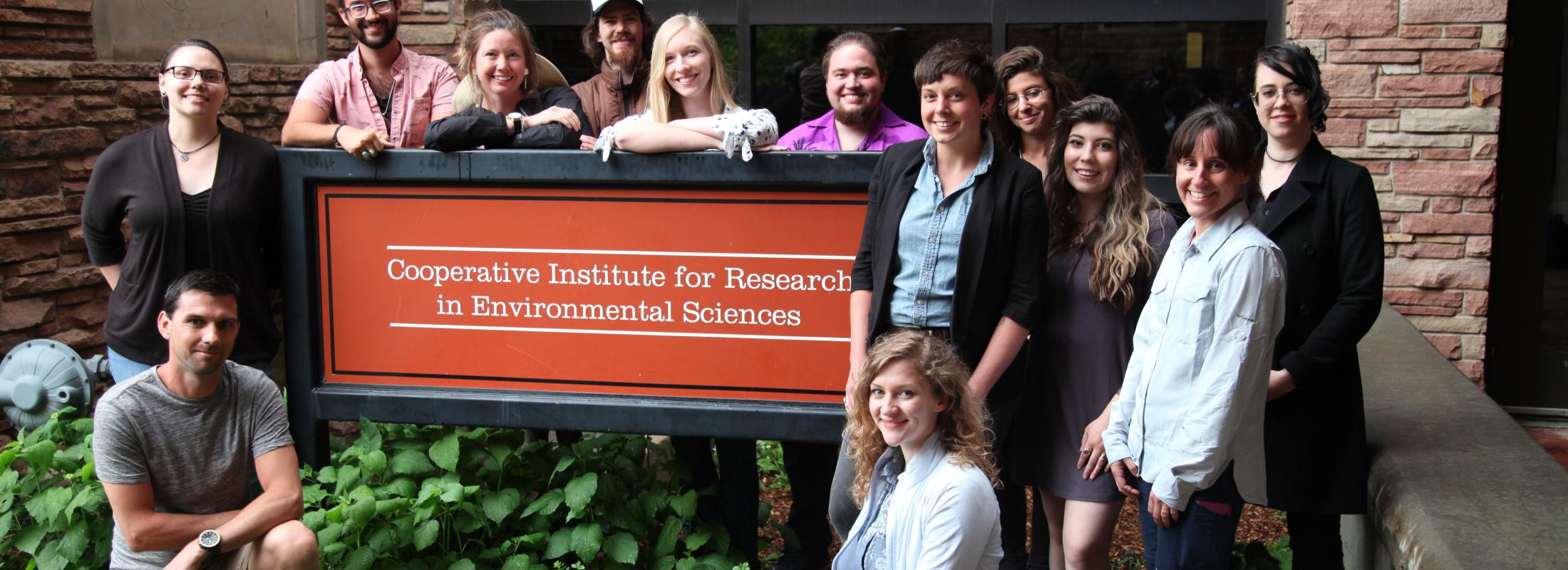
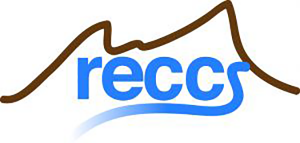
The Research Experience for Community College Students, or RECCS (pronounced Rex), is a paid summer research internship program at the University of Colorado Boulder open to all Colorado community college students. RECCS gives community college students an authentic research experience where they explore environmental or geosciences and gain the confidence to transition to a four-year program in the STEM disciplines. A CIRES (Cooperative Institute for Research in Environmental Sciences) program, it was initiated by former faculty member and current Regent At-Large Lesley Smith.
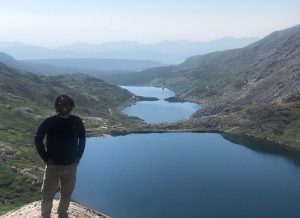
RECCS students receive a weekly stipend of $600 to conduct field- or lab-based independent research over a nine-week period in the summer while working with a team of scientists, explained Alicia Christensen, program manager for program. They learn basic research, writing and communication skills, and they present their research at a local student science symposium.
“It has been running since 2014,” Christensen said. “We work with a variety of community colleges across Colorado, both in the Denver Metro area and also rural Colorado to bring community college students to campus and connect them with research mentors here at CU.”
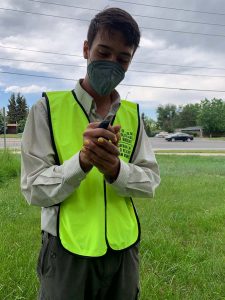
In addition to the scientific endeavors undertaken by students, RECCS participants glean a wealth of experience through the program.
“Some of the professional development we did was around identity and science identity and what it’s like to come into the science culture at a four-year university,” Christensen said. “They were very brave in terms in being vulnerable and talking about some really tough subjects. In the end, I think these students are continuing to hang out and talk to each other after this experience.”
The typical cohort is about 10 students, she said. However, this past summer RECCS had 18 students. National Oceanic and Atmospheric Administration (NOAA), the U.S. Geological Survey and the Colorado Department of Public Health and Education have been instrumental in external pairings.
“(Students) work on a variety of research topics related to atmospheric sciences, climate change, air quality and pollution,” Christensen said. “We also have a variety of students who will do more field-based experiences and ecology based projects.”
Students also participate in a professional development workshop through the summer with the help of program staff and some CU Boulder graduate students, she said.
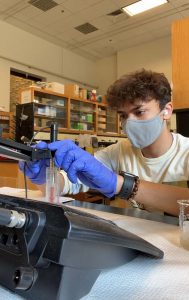
“That’s really focused around helping the students understand how to synthesize the research that they’re doing into a scientific poster and also a formal conference presentation,” Christensen said. “They learn the skills required to communicate their science to a more general audience than those that are specific to their disciplines.”
Christensen said another aspect of the program that is imperative and unique is the importance of introducing racially and ethnically diverse students going into the sciences. “It is because it’s hard for them to feel welcome. And these programs, especially those focused around community college students, tend to be more ethnically and racially diverse,” she said.
Anne Gold, director of this year’s education outreach program, shared a sampling of how the program has changed these students’ lives.
“Prudence Crawmer was a student maybe four years ago. She came in and really felt like she really wanted to do science. She was a massage therapist before and had that as a career and then went to college because she was interested in sciences,” Gold said. Kramer was paired with a mentor in the student research lab who also works with the Crowdmag Geomagnetic software app, and became interested in doing a magnetic field map of the Earth. “And she then went to AGU, the American Geophysical Union conference in San Francisco. And she won the student poster prize there for her presentation and was brought back for a presentation the next year.”

Marianne Blackburn, a student from the first cohort, was matched with a research scientist who was at the U.S. Geological Survey at the time doing a wildfire research.
“Marianne also had some health background. Her goal was to do something in the medical field, but then she got so excited about wildfire and succession after wildfires that she continued working with the mentor and then did her masters in the field,” Gold said. She’s now in the Ph.D. program and has presented at conferences.
Students participate in an end of summer poster session in conjunction with other Research Experience for Undergrads (REU) programs on campus or at University Corporation for Atmospheric Research (UCAR).
With the pandemic, the poster session was held virtually.
“We use Topia, which allows students to have their own kind of avatars and walk around and walk up to people’s posters and listen to their talks, to their posters, et cetera,” Christensen said. “It’s like an actual poster session at a conference, but in a virtual world. Students were able to invite friends, family and their research mentors. They received feedback from people who signed up to be evaluators for their posters as well.” Students did their formal presentations the last day of the program via Zoom and Facebook Live.
 CU Regent Lesley Smith
CU Regent Lesley SmithRegent Smith’s role and support as one of the founding PIs of the RECCS program was critical, Gold said. She was assistant director at CIRES the time.
“She ran the initial programs together with me in the very beginning, and then we brought in additional support,” Gold said. “She was instrumental in institutionalizing the program within CIRES and supporting the students and has been terrific in really building also strong personal connections with students.”
Gold said the program has also been hosting sessions and writing book chapters and contributing in other ways such as trainings for evaluation.
“Our program definitely has certain spins and we are very proud of when we all learn from each other,” Gold said. “There’s lots of ideas from us that are getting picked up by others and we pick up some other ideas and it’s definitely true that having community college students on the radar as a target audience is becoming more and more important across the nation.”
During a typical summer, students from seven community colleges take part. After completing the program, many go on to four-year colleges.
“Many ended up attending CU Denver, especially those that live in the Denver area,” Christensen said. “But we do have students that also attend CU Boulder and students will also go on to attend Metro, CSU (and) Colorado School of Mines.”
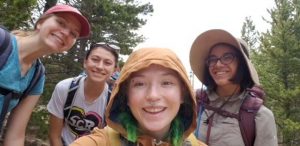 Interested community college students can go to the RECCS website, which has information on how to fill out and submit the application, she said. The program also works with the Louis Stokes Alliances for Minority Participation.
Interested community college students can go to the RECCS website, which has information on how to fill out and submit the application, she said. The program also works with the Louis Stokes Alliances for Minority Participation.“One of the biggest things I think we always hear from students is wow, like this research is so much different than how I ever thought research happened and how science happened,” Christensen said. “In addition to that, they get a, a strong sense of belonging with other cohort members to the scientific community.”
12 October 2021, 2:08 pm - 33 minutes 46 secondsUCCS’ Bachelor of Innovation Boldly Goes Where None Have Gone Before

Benjamin Kwitek, director of innovation at the University of Colorado Colorado Springs, understands that innovation is critical to solving the problems our society faces. Kwitek understands the United States is at the forefront of innovation at a local and global level. At UCCS, he is also the innovator of the world’s first Bachelor of Innovation.- What is innovation and why is it important?
- How the U.S. is able to push boundaries and lead the world in innovation.
- The importance of an educated population and university collaborations that lead to a culture of trying new things.
- Angel investors and capital can turn a startup idea into a company that makes a huge difference.
- The making of an inventor: Kwitek grew up in a family of creators and innovators.
- Kwitek is the inventor of the technology in the Dr. Grip Pen.
 He recently got his 10th U.S. patent with more pending.
He recently got his 10th U.S. patent with more pending.- Portable cinnamon roll sold at Taco Bell and others is another invention.
- UCCS is unique that it offers a Bachelor of Innovation degree – the first in the world.
- Innovation is created in teams – not big teams just enough for two pizza.
- The importance of complementing strengths and skills creating a culture of innovation.
- UCCS program combines multiple areas of study.
 Diversity of faculty backgrounds and why it’s important to have people who have experience in their field vs. only learning from a book.
Diversity of faculty backgrounds and why it’s important to have people who have experience in their field vs. only learning from a book.- ‘Innovation’ in the degree name is important as a distinguishing factor that will help students stand out.
- How a BI can be a direct pipeline from CU to careers that benefit the state and world.
- Ongoing projects already making a difference in Colorado.
- Colorado Springs has the makings of a mecca of innovation – can a school at CU be dedicated to innovation?
- Realizing the biggest difference any of us can make is by empowering other people to make a difference, because then the light continues.
- How the students at UCCS are providing hope and a new vision for the future during tumultuous times.
- Kwitek’s world travels highlight the power of innovation and how every nation can add value.
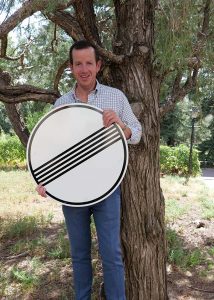 The inspiration from Germany for those cool “street” signs people put in their homes and garages and how they landed Kwitek on Leno.
The inspiration from Germany for those cool “street” signs people put in their homes and garages and how they landed Kwitek on Leno.- What Kwitek has learned from failure, and how that benefits him, as he perseveres, and his students as he guides them past pitfalls.
- Learning not from focusing on the orange cones, rather the space between them.
- Why innovation is different from entrepreneurship: Innovation is not stepping over the bar, it’s raising it to new heights.
Resources
- CU Colorado Springs Bachelor of Innovation
- William Shatner keynote at UCCS
- UCCS
- Grip Pen
- Portable Cinnamon Roll Patent
- At the sign post, up ahead, Colorado Springs Business Journal
28 September 2021, 1:56 pm - 37 minutes 50 secondsThe Affordable-Housing Crisis and Building Transportation, Health and Wealth in Underserved Areas
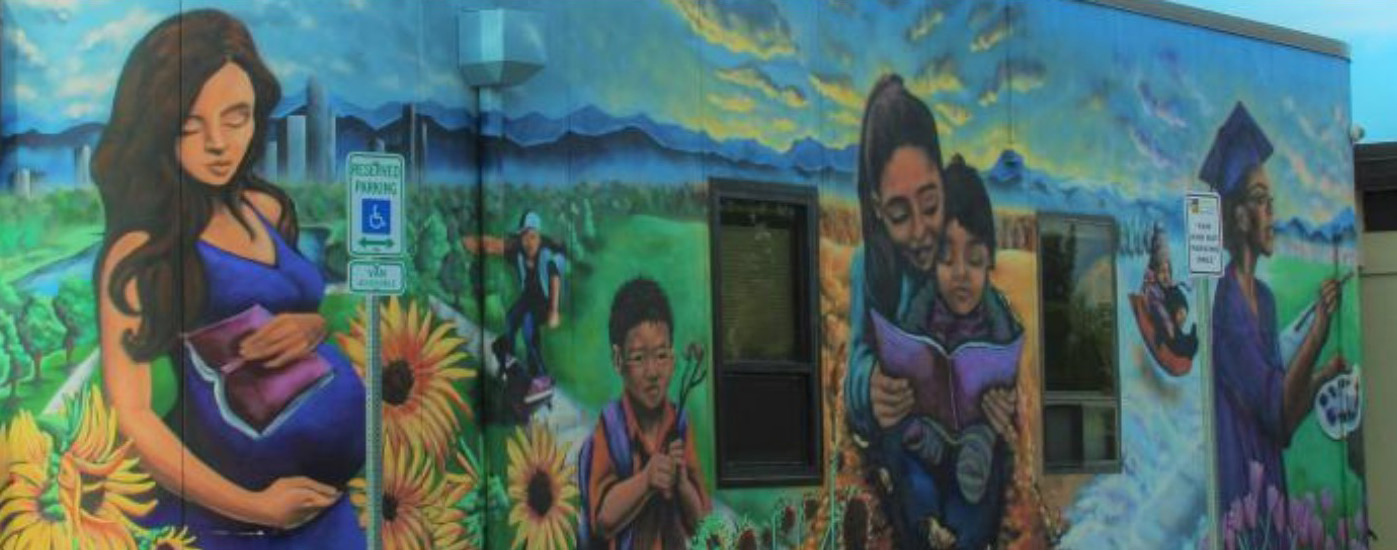 Mural in the Valverde neighborhood.
Mural in the Valverde neighborhood.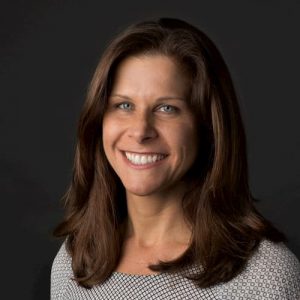 Makarewicz
MakarewiczFor many families in the Metro area, safe, adequate housing is a dream, and the limited access to transportation is a nightmare. Today on CU on the Air, we’re talking to CU Denver’s Carrie Makarewicz, associate professor of urban and regional planning in the College of Architecture and Planning, about the housing and commuting crises and what is in the works to remedy them.
- The “missing-middle” and why teachers, police officers, nurses, and people in many other professions cannot afford to buy a home in Colorado.
- The inspiration for Makarewicz’s interest in urban planning – The Rust Belt and its fluctuating employment for heads of families.
- A recent report out for the state of Colorado by the Common Sense Institute shows since the Global Financial Crisis the region hasn’t continued to build the amount of housing we were producing before the crisis.
- The lower supply of housing is a problem because people continue to have children and those children eventually grow up and want to move out and raise their own families. Those new households from children of existing residents combined with people moving into the area contribute to the disparity between who can and cannot afford a home because of the imbalance between supply and demand.
- Why communities that resist growth are contributing to the problems that come from growth, such as traffic congestion, poor air quality, and unaffordable housing.
- How the inability to afford adequate housing, or spend too much income on housing, means people do not have a healthy place to recuperate each day or enough leftover discretionary income to invest in other things that support their mental and physical health as well as their professional development. This then hurts the workforce longer term, which hurts the economy and employers. It also hurts schools when children are not able to come to school prepared, because of inadequate housing and their family’s lack of income.
- Large developers are not doing thorough enough market analyses and are focusing on the small share of high-income groups who can afford expensive single-family homes as well as high-end luxury apartments, rather than smaller homes, townhomes, and condos, at moderate prices. This leaves the middle class to rent high priced apartments, which often requires them to pay too much of their income toward housing without building equity.
- Why high-rise apartments are valuable for highly populated areas, the economy, and the environment.
- Building permits from recent years, about 25,000 each year, have largely been for single-family homes across the Front Range. In the 7 counties, excluding Denver, 70% were for single family. With Denver, 59% of permits were for single family. Denver is building a large percentage of the multi-family structures that are needed for the growing population but it’s not enough.
- If every single-family home that was built in the last two years were replaced by two townhomes, that would have doubled housing production. It would also reduce the amount of land needed for each home and therefore the distance between housing and other destinations, which could help to reduce traffic. As we drive past more low-density housing, it adds more time, more traffic, and requires more road needs.
- Why do so many people want a single-family home? A lot of factors, people want private yards, gardens, etc., but there are ways to design denser housing that can accommodate these amenities at lower costs and through less land consumption.
- The region’s focus on single-family home construction—which require more land—means people are moving farther out of town and therefore are taking on longer commutes, harming their own health and the state’s environment.
- The National Science Foundation, Civic Innovation Challenge planning grant for mobility projects Makarewicz was involved in, Undefining the Redline and Re-Imagining Mobility Investments to Equitably Link Jobs, Affordable Housing and Services, or the Valverde Movement Project, was an effort to find ways to improve mobility in Valverde and West Denver without causing gentrification and displacement by working with the community and nonprofit partners to understand all the needs of residents, not just mobility needs.
- Redlining: Discriminatory maps created in the 30s, 40s, and 50s, and then beyond, informally, through other discriminatory practices with loans and real estate practices, in which red lines were literally drawn on maps by the Home Owners’ Loan Corporation, a federal agency, that identified less risky and risky areas to lend or not to lend. The risky areas were almost exclusively communities of color and people couldn’t get loans in these areas which led to decades of wealth inequality.
- Highway Interstate building was supposed to go around cities. Instead, they found areas where home values weren’t worth very much, the redlined areas. These places would be an easier target for highway construction because they could avoid protests to their eminent domain, and it would be cheaper to buy up the properties in these neighborhoods.
- Highways in these neighborhoods cause poorer health conditions, such as asthma, and other respiratory diseases throughout these communities. The highways also create barriers to get to other places for daily needs.
- The sacrifices community members make because of the food desert and the challenge of transportation and getting across the highways to access amenities.
- Looking at strategies for the Valverde neighborhood in Denver that can be replicated in similar places across the country to build wealth and improve health.
- Thirty partners contributed to the project, including RTD, the University of Denver, Center for Community Wealth Building, DRCOG, the City and County of Denver, Lyft and Lime, and others who are focused on housing and transportation, their connection and solutions.
- What was learned at the spring Valverde Movement Fest and the summer pop-ups in the park in Valverde. The Fest included food trucks, dancing, games, history on the community, story mapping of peoples favorite vs. disfavored areas in the community and lots and lots of discussions. The University of Denver geocodes the residents’ mapped locations and put them online in an interactive map.
- Even though Valverde is only three miles from downtown to get there by transit it takes about 30 to 50 minutes.
- Makarewicz and her colleagues are hoping to create a detailed regional housing needs assessment for the region to identify housing needs by type and location at a very small-scale geography with detailed parcel level housing data and hopefully detailed household data from the Census Data Center at Boulder as well as household projections from the state demographer. Showing the detailed housing gap by small geographies can become an impetus for action and change in terms of the housing the region is currently planning and developing versus the housing that is needed given incomes of the workers who are needed in each community.
- Makarewicz has been involved the Public Schools Interest Group for the American Planning Association (APA) to solve a void in the planning profession: planners do not know enough about school planning or think about how our public schools contribute to our communities.
- What our listeners can do to better understand and speak up for responsible community growth and the positive impacts that can have on society as a whole.
Resources
14 September 2021, 2:16 pm - More Episodes? Get the App
Your feedback is valuable to us. Should you encounter any bugs, glitches, lack of functionality or other problems, please email us on [email protected] or join Moon.FM Telegram Group where you can talk directly to the dev team who are happy to answer any queries.
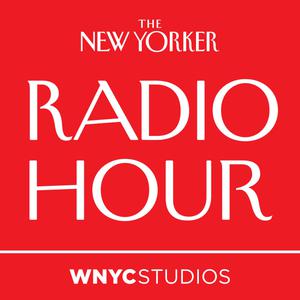 The New Yorker Radio Hour
The New Yorker Radio Hour
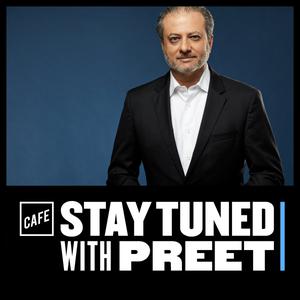 Stay Tuned with Preet
Stay Tuned with Preet
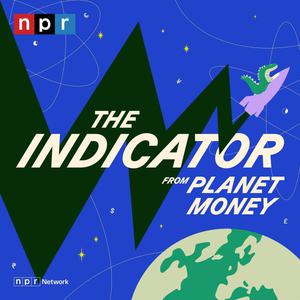 The Indicator from Planet Money
The Indicator from Planet Money
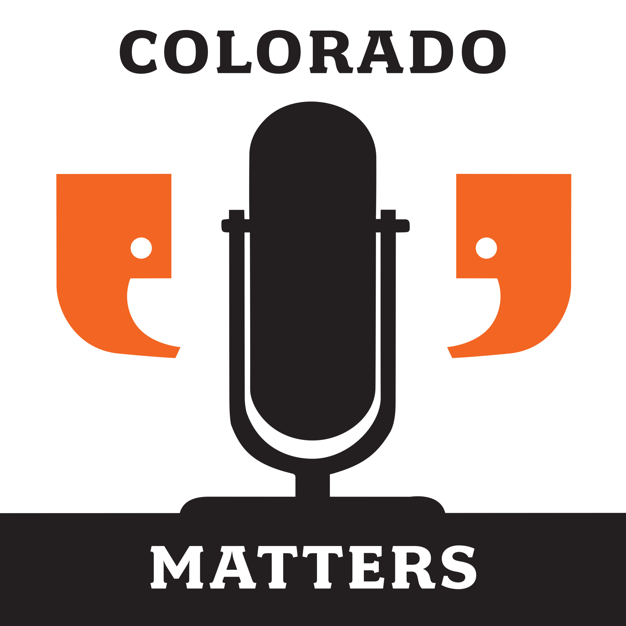 Colorado Matters
Colorado Matters
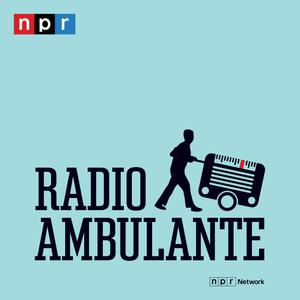 Radio Ambulante
Radio Ambulante
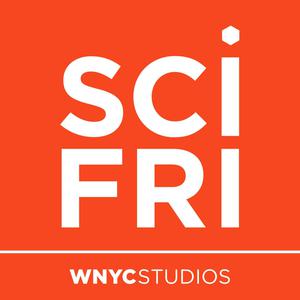 Science Friday
Science Friday